-
 Bitcoin
Bitcoin $106,754.6083
1.33% -
 Ethereum
Ethereum $2,625.8249
3.80% -
 Tether USDt
Tether USDt $1.0001
-0.03% -
 XRP
XRP $2.1891
1.67% -
 BNB
BNB $654.5220
0.66% -
 Solana
Solana $156.9428
7.28% -
 USDC
USDC $0.9998
0.00% -
 Dogecoin
Dogecoin $0.1780
1.14% -
 TRON
TRON $0.2706
-0.16% -
 Cardano
Cardano $0.6470
2.77% -
 Hyperliquid
Hyperliquid $44.6467
10.24% -
 Sui
Sui $3.1128
3.86% -
 Bitcoin Cash
Bitcoin Cash $455.7646
3.00% -
 Chainlink
Chainlink $13.6858
4.08% -
 UNUS SED LEO
UNUS SED LEO $9.2682
0.21% -
 Avalanche
Avalanche $19.7433
3.79% -
 Stellar
Stellar $0.2616
1.64% -
 Toncoin
Toncoin $3.0222
2.19% -
 Shiba Inu
Shiba Inu $0.0...01220
1.49% -
 Hedera
Hedera $0.1580
2.75% -
 Litecoin
Litecoin $87.4964
2.29% -
 Polkadot
Polkadot $3.8958
3.05% -
 Ethena USDe
Ethena USDe $1.0000
-0.04% -
 Monero
Monero $317.2263
0.26% -
 Bitget Token
Bitget Token $4.5985
1.68% -
 Dai
Dai $0.9999
0.00% -
 Pepe
Pepe $0.0...01140
2.44% -
 Uniswap
Uniswap $7.6065
5.29% -
 Pi
Pi $0.6042
-2.00% -
 Aave
Aave $289.6343
6.02%
Is the long lower shadow touching the lower Bollinger band a rebound signal? When is the safest time to enter the market?
A long lower shadow near the lower Bollinger Band often signals a potential reversal, especially when confirmed by volume, RSI, or MACD.
Jun 15, 2025 at 07:28 am
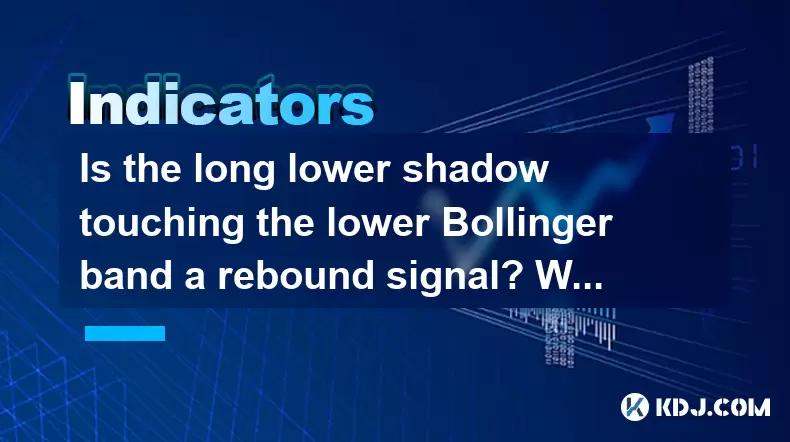
Understanding the Long Lower Shadow and Its Significance
In technical analysis, a long lower shadow refers to a candlestick pattern where the price opens higher than it closes but also drops significantly during the period before recovering. This creates a visible "shadow" below the body of the candle. When this occurs on a chart, especially when the lower end of the shadow touches or nearly touches the lower Bollinger Band, traders often interpret it as a potential reversal signal.
The Bollinger Bands consist of a middle moving average line (usually 20-period simple moving average) and two outer bands set at two standard deviations away from the middle line. Prices near the lower band may suggest oversold conditions, particularly if they are accompanied by a strong reversal pattern such as a long lower shadow.
Why the Lower Bollinger Band Matters in Reversal Analysis
When prices reach the lower Bollinger Band, it often indicates that the market is trading at levels that are statistically far below the average. However, touching the band alone isn’t sufficient for predicting a reversal. It must be confirmed by other indicators or patterns. A long lower shadow forming at this level adds weight to the argument that buyers have stepped in after a sharp decline.
This situation suggests that even though sellers pushed the price down, buyers managed to push it back up, closing near the opening price or higher. The longer the shadow, the more intense the buying pressure was during that session. This can be seen as an early sign of market rejection of lower prices.
How to Confirm the Signal Using Other Indicators
To increase the reliability of the long lower shadow near the lower Bollinger Band, traders often combine it with other tools:
- Volume: An increase in volume during or after the formation of the long lower shadow can indicate stronger participation from buyers.
- RSI (Relative Strength Index): If RSI is below 30, it confirms oversold conditions, which supports the idea of a potential bounce.
- MACD (Moving Average Convergence Divergence): A bullish crossover or divergence can act as a confirmation signal.
- Price Action: Look for engulfing candles or hammer patterns that coincide with the long lower shadow.
These additional confirmations help filter out false signals and improve the probability of a successful trade.
Identifying the Safest Entry Point After the Signal
Once the long lower shadow appears near the lower Bollinger Band, timing your entry becomes crucial. Entering too early could expose you to further downside risk, while waiting too long might cause you to miss the move entirely.
Here are steps to identify the safest time to enter:
- Wait for the next candle after the long lower shadow to close above its high. This confirms strength and continuation of the reversal.
- Ensure that the price moves above key support levels or recent swing lows.
- Use a stop-loss just below the low of the long lower shadow candle.
- Monitor the Bollinger Band width; a contraction or stabilization may indicate consolidation before a potential upward move.
Using these criteria helps ensure that you're not entering based solely on one candlestick pattern but rather a confluence of factors indicating strength.
Managing Risk and Setting Stop-Loss Levels
Risk management is essential when trading off a potential rebound signal like this. Even if multiple indicators align, the market can still move against you due to unexpected news or whale movements.
Here’s how to manage your exposure effectively:
- Place a stop-loss order slightly below the low of the long lower shadow candle. This protects you from significant downside if the bounce fails.
- Consider using a trailing stop once the price starts to rise, locking in profits as the trend develops.
- Never risk more than 1%–2% of your total capital on any single trade.
- Watch for sudden spikes in volatility, especially around major announcements or regulatory updates in the crypto space.
Proper risk controls ensure that even if the trade doesn’t work out, your portfolio remains intact for future opportunities.
Evaluating Historical Examples in Crypto Markets
Looking at past price charts of major cryptocurrencies like Bitcoin and Ethereum, we can find numerous instances where a long lower shadow appeared near the lower Bollinger Band, followed by a short-term rebound.
For example:
- In late 2022, Bitcoin formed a long lower shadow near the lower Bollinger Band on the daily chart, followed by a 15% rally over the next few days.
- Ethereum showed similar behavior in mid-2023, where a hammer-like candle formed near the lower band, leading to a multi-day uptrend.
While historical performance does not guarantee future results, these examples demonstrate how the pattern has worked in real-market conditions.
Frequently Asked Questions
Can I rely solely on the long lower shadow near the lower Bollinger Band for trading decisions?
No, relying solely on this pattern without confirmation from other indicators or price action increases the risk of false signals. Always use complementary tools like volume, RSI, or MACD to validate the potential reversal.
Should I always wait for the next candle to close before entering?
Yes, waiting for the next candle to close above the high of the long lower shadow candle improves the reliability of the setup. It ensures that the initial buying pressure continues and reduces the chance of entering a false bounce.
What timeframes are best suited for observing this pattern?
This pattern works well on higher timeframes such as the 4-hour or daily charts. These timeframes provide more reliable signals due to reduced noise compared to shorter intervals like 15-minute or 1-hour charts.
Does this strategy apply equally to all cryptocurrencies?
While the concept applies broadly, higher-cap cryptocurrencies like Bitcoin and Ethereum tend to exhibit more predictable behavior due to greater liquidity and market participation. Smaller altcoins may show erratic movement, making this signal less reliable without additional filters.
Disclaimer:info@kdj.com
The information provided is not trading advice. kdj.com does not assume any responsibility for any investments made based on the information provided in this article. Cryptocurrencies are highly volatile and it is highly recommended that you invest with caution after thorough research!
If you believe that the content used on this website infringes your copyright, please contact us immediately (info@kdj.com) and we will delete it promptly.
- 2025-W Uncirculated American Gold Eagle and Dr. Vera Rubin Quarter Mark New Products
- 2025-06-13 06:25:13
- Ruvi AI (RVU) Leverages Blockchain and Artificial Intelligence to Disrupt Marketing, Entertainment, and Finance
- 2025-06-13 07:05:12
- H100 Group AB Raises 101 Million SEK (Approximately $10.6 Million) to Bolster Bitcoin Reserves
- 2025-06-13 06:25:13
- Galaxy Digital CEO Mike Novogratz Says Bitcoin Will Replace Gold and Go to $1,000,000
- 2025-06-13 06:45:13
- Trust Wallet Token (TWT) Price Drops 5.7% as RWA Integration Plans Ignite Excitement
- 2025-06-13 06:45:13
- Ethereum (ETH) Is in the Second Phase of a Three-Stage Market Cycle
- 2025-06-13 07:25:13
Related knowledge
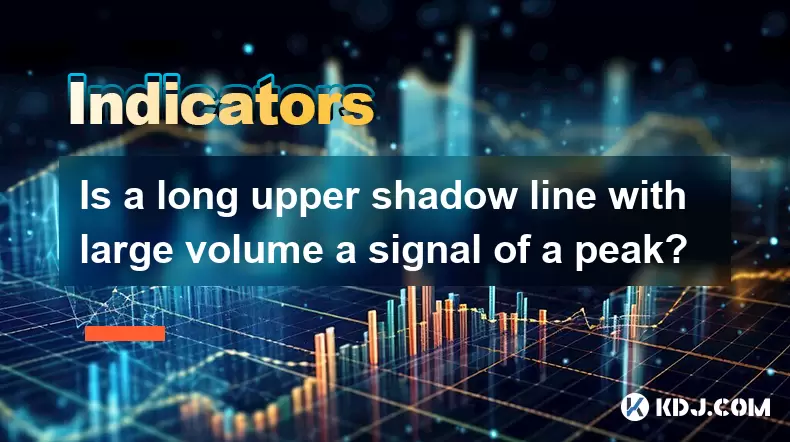
Is a long upper shadow line with large volume a signal of a peak?
Jun 17,2025 at 05:07am
Understanding the Long Upper Shadow LineA long upper shadow line, often referred to as a shooting star or inverted hammer depending on its location in a chart, is a candlestick pattern that indicates potential reversal from an uptrend. This pattern forms when prices rise significantly during the trading period but then fall back to close near the openin...

How to confirm the effectiveness of the average price line support in the time-sharing chart?
Jun 17,2025 at 12:56am
Understanding the Time-Sharing Chart and Its RelevanceIn cryptocurrency trading, time-sharing charts play a crucial role in analyzing short-term price movements. These charts typically display price fluctuations over a specific period, often ranging from minutes to hours. Traders rely on them to make quick decisions based on real-time data. The average ...

What does it mean when the momentum indicator breaks above the zero axis?
Jun 17,2025 at 12:43am
Understanding the Momentum IndicatorThe momentum indicator is a technical analysis tool used to measure the speed or velocity of price movements in cryptocurrency markets. It helps traders identify potential trend reversals, overbought or oversold conditions, and confirms existing trends. The indicator typically oscillates around a zero line, with value...
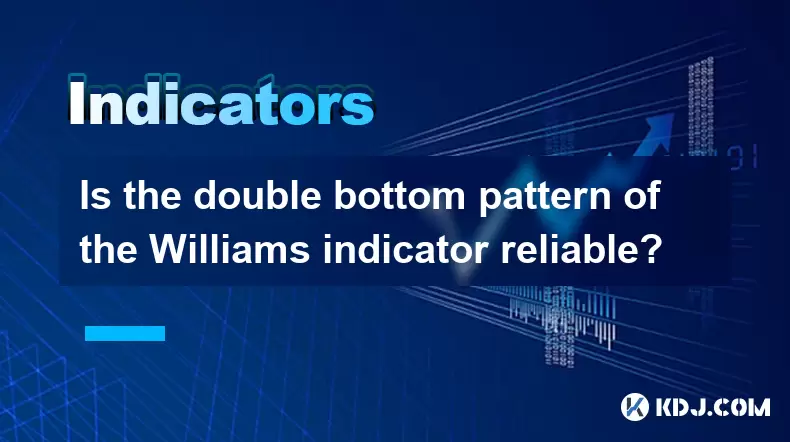
Is the double bottom pattern of the Williams indicator reliable?
Jun 17,2025 at 03:56am
Understanding the Williams Indicator and Its SignificanceThe Williams %R indicator, often referred to as Williams Percent Range, is a momentum oscillator used in technical analysis to identify overbought or oversold conditions in the market. Developed by Larry Williams, this indicator fluctuates between 0 and -100, with readings above -20 indicating ove...
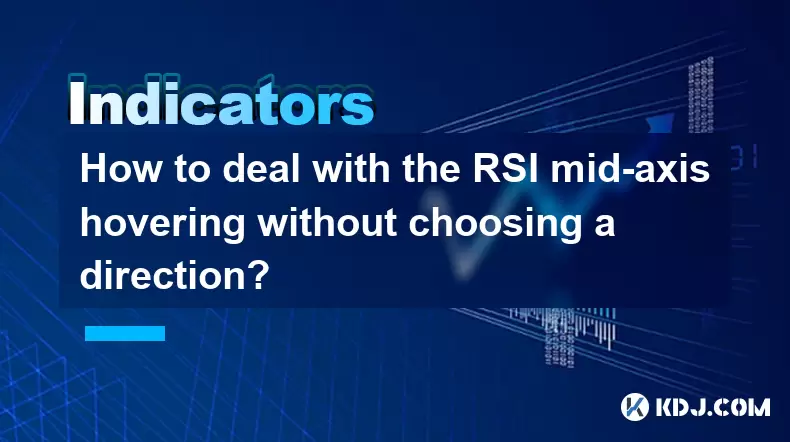
How to deal with the RSI mid-axis hovering without choosing a direction?
Jun 17,2025 at 02:02am
Understanding RSI Mid-Axis Hovering in Cryptocurrency TradingThe Relative Strength Index (RSI) is a popular momentum oscillator used by traders to assess whether an asset is overbought or oversold. In cryptocurrency markets, it's common for the RSI to hover around its mid-axis, typically at the 50 level, without showing a clear upward or downward trend....
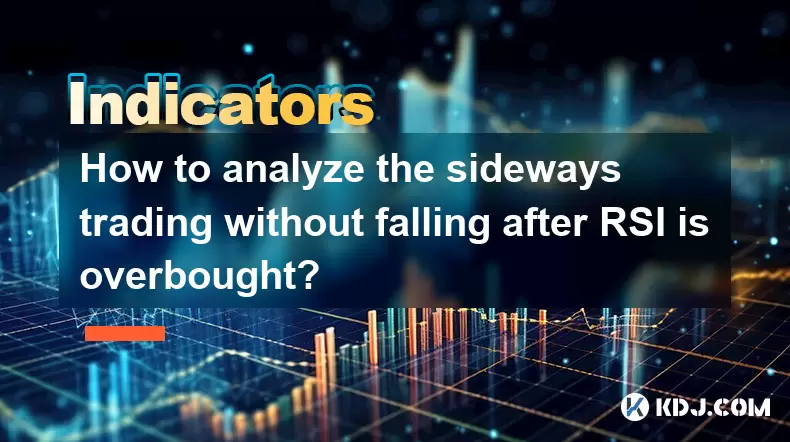
How to analyze the sideways trading without falling after RSI is overbought?
Jun 17,2025 at 04:14am
Understanding RSI and Its Role in Cryptocurrency TradingThe Relative Strength Index (RSI) is a momentum oscillator used to measure the speed and change of price movements. In the context of cryptocurrency trading, it helps traders identify potential overbought or oversold conditions. When the RSI exceeds 70, it typically signals that an asset may be ove...

Is a long upper shadow line with large volume a signal of a peak?
Jun 17,2025 at 05:07am
Understanding the Long Upper Shadow LineA long upper shadow line, often referred to as a shooting star or inverted hammer depending on its location in a chart, is a candlestick pattern that indicates potential reversal from an uptrend. This pattern forms when prices rise significantly during the trading period but then fall back to close near the openin...

How to confirm the effectiveness of the average price line support in the time-sharing chart?
Jun 17,2025 at 12:56am
Understanding the Time-Sharing Chart and Its RelevanceIn cryptocurrency trading, time-sharing charts play a crucial role in analyzing short-term price movements. These charts typically display price fluctuations over a specific period, often ranging from minutes to hours. Traders rely on them to make quick decisions based on real-time data. The average ...

What does it mean when the momentum indicator breaks above the zero axis?
Jun 17,2025 at 12:43am
Understanding the Momentum IndicatorThe momentum indicator is a technical analysis tool used to measure the speed or velocity of price movements in cryptocurrency markets. It helps traders identify potential trend reversals, overbought or oversold conditions, and confirms existing trends. The indicator typically oscillates around a zero line, with value...

Is the double bottom pattern of the Williams indicator reliable?
Jun 17,2025 at 03:56am
Understanding the Williams Indicator and Its SignificanceThe Williams %R indicator, often referred to as Williams Percent Range, is a momentum oscillator used in technical analysis to identify overbought or oversold conditions in the market. Developed by Larry Williams, this indicator fluctuates between 0 and -100, with readings above -20 indicating ove...

How to deal with the RSI mid-axis hovering without choosing a direction?
Jun 17,2025 at 02:02am
Understanding RSI Mid-Axis Hovering in Cryptocurrency TradingThe Relative Strength Index (RSI) is a popular momentum oscillator used by traders to assess whether an asset is overbought or oversold. In cryptocurrency markets, it's common for the RSI to hover around its mid-axis, typically at the 50 level, without showing a clear upward or downward trend....

How to analyze the sideways trading without falling after RSI is overbought?
Jun 17,2025 at 04:14am
Understanding RSI and Its Role in Cryptocurrency TradingThe Relative Strength Index (RSI) is a momentum oscillator used to measure the speed and change of price movements. In the context of cryptocurrency trading, it helps traders identify potential overbought or oversold conditions. When the RSI exceeds 70, it typically signals that an asset may be ove...
See all articles

























































































